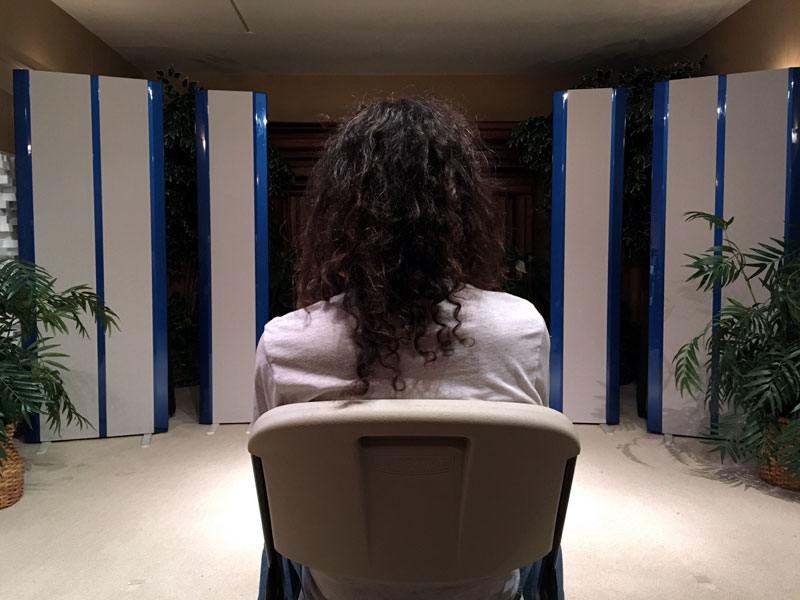New From Magnepan: The 30.7
ormally my annual late-summer trip to Magnepan in White Bear Lake, Minnesota, east of of the Twin Cities, is mildly eventful. In the past, I've experienced some new variation on an established theme that Wendell Diller of Magnepan has dreamed up. This has often involved listening to Wendell's favored three-channel stereo configuration or a desktop audio system that sounds as big as Magnepan's large, windowless listening bunker will allow. That was then. This year, Wendell treated me to some real news: the introduction of Magnepan's new flagship speaker, the 30.7 ($29,000 per system). I was the first person outside the company to hear it, and it made quite an impression. First a few facts and figures. Magnepan introduced its MG20, the precursor to the current 20.7, which has been the company's top of the line for a few years, at the Summer CES in 1992. So 25 years ago, when there was still a CES in the summer, the last new Magnepan flagship speaker appeared. The 30.7 has big shoes to fill, given the sheer size of the 20.7, and ones with worn soles as well, given Magnepan's reluctance to introduce a new speaker simply to pad its product line. The 30.7 is even bigger than its forebear. It's a four-way speaker that divides the bass and treble/midrange into separate panels. This not only isolates the upper and lower frequencies from each other but also gives some setup flexibility, which can be a mixed blessing. Each bass panel is the size of a 20.7 -- 29"W x 79"H -- and features a pair of bass drivers of different sizes, separated by a divider running top to bottom. There are two different size (and design) bass panels, which is the same concept as that of the long-discontinued Tympani IVa. The treble/midrange panel is the same height and 16" wide. The midrange driver is a new quasi-ribbon design whose details Wendell Diller refuses to discuss at this point -- "as is our tradition," he teases. The 60" ribbon tweeter is fully manufactured at Magnepan. "The total area of the drivers is 22% greater than that of Magnepan's Tympani IVa," according to Wendell. The bass and midrange drivers are push-pull, but "Nothing is pushing and pulling," Wendell explained. "This is not an electrostatic speaker. The opposing magnet structure increases the magnetic field strength for increased efficiency."
That's not Marc Mickelson and not Magnepan's listening room, but that is a pair of 30.7s. As is his way, Wendell began the demo of the 30.7 with a test. He is especially proud of the 30.7's power response -- the total sound emitted at all frequencies in all directions. Speakers are measured an anechoic chamber in order to quantify their frequency response, but no one has an anechoic listening space, making such measurements of limited utility to consumers. Power response is more representative of how a speaker will actually sound in a typical listening space -- a living room, for instance -- and isn't how a speaker sounds what matters? It is to me. Back to Wendell's test. I began standing at the back of the room and, with music playing and my eyes closed, I walked toward the front and between the speakers. There was no shift in tonality, image specificity or volume, until I passed the speakers, that is. The impression was of a coherent, powerful three-dimensional mass of music, the entirety projected into the room uniformly from any listening position. The 30.7 passed the test. In general audiophile terms, the 30.7 cast an absolutely immense soundstage in all dimensions, including height. It was impossible to distinguish where the sound ended and the room began, which is something I've heard in this same space, courtesy of Wendell's preferred three-channel stereo setup, but never with only a pair of speakers. There was also great tonal purity, an utterly even-handed, unfettered presentation. So often "great tonal purity" means a thin, antiseptic grayness that to my ears is anything but pure, but that wasn't the case with the 30.7s, which were honest to the instruments' and the singers' varied natures. There was also great top-to-bottom speed, which translated into blazing-fast transients, the notes firing from the speakers with appropriate -- but not exaggerated -- edge. Each note was distinct and distinctly part of the music's very fabric. While the Magnepan
20.7s in Audio Research's listening room were something to behold, as were the rebuilt Tympani I-U's that Warren Gehl of Audio Research uses at home,
even my brief demo put the 30.7 firmly in the discussion of the best Magneplanar ever.
Wendell has promised to set up a pair of 30.7s in my listening room, so it's also a
discussion I will report on further. |

